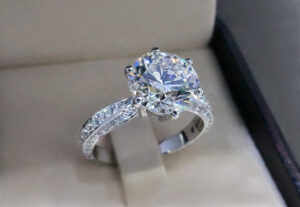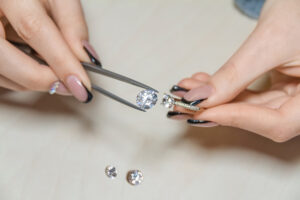
When the lab-grown diamonds came onto the market, engagement ring customers got a choice of two types of diamonds for the first time ever. The introduction of lab-grown diamonds has created a lot of debates and many people questioning whether they are real diamonds. They are in fact similar in physical, chemical, and optical properties to natural diamonds. So, if you’re looking for an engagement ring and are unsure about the worth, origin, or authenticity of lab-created diamonds, keep on reading this article.
Are Lab-Grown Diamonds Real?
The sole difference between a lab-grown diamond and a natural diamond is its creation. Some people call lab-grown or man-made diamonds “synthetic diamonds,” however this is a misnomer because lab-grown diamonds are not fakes or imitations of actual diamonds.
Natural diamonds have the same properties as lab-grown diamonds. Hence, the only way to tell the difference between lab-grown and mined gemstones is by a microscopic inscription on the lab-grown diamonds. You should note that a lab diamond is optically, chemically, and physically identical to a natural diamond and cannot be differentiated from a natural diamond by observing with naked eyes.
Why Is Lab-Grown Diamond Getting Popular?
The mined diamond industry has recently been chastised for its unethical production practices. They were not only exploiting workers and their families by forcing them to work, but they were also sponsoring violent insurgent movements across Africa. Despite a dramatic decrease in unethical activities, many individuals prefer lab-grown diamonds since they can be traced all the way back to their specific origin, giving them peace of mind that their diamond was ethically acquired.

The diamond business, like any other natural resource mining, has a substantial environmental impact. While diamond mining firms aim to reduce the impact, lab-grown diamonds are fundamentally and much less harmful to the environment. Growing a diamond in a lab consumes far less energy than mining one. In fact, to cut expenses, labs try to use as little energy as possible during the diamond manufacturing process.
The cost of a lab-grown diamond is typically 20-30% cheaper than that of a natural diamond. You should not make the mistake of confusing less expensive with inexpensive. The capital expenses of lab-grown and mined diamonds are actually rather similar because of the costs of cutting, polishing, etc. However, the expenses and operations after that point are vastly different.
